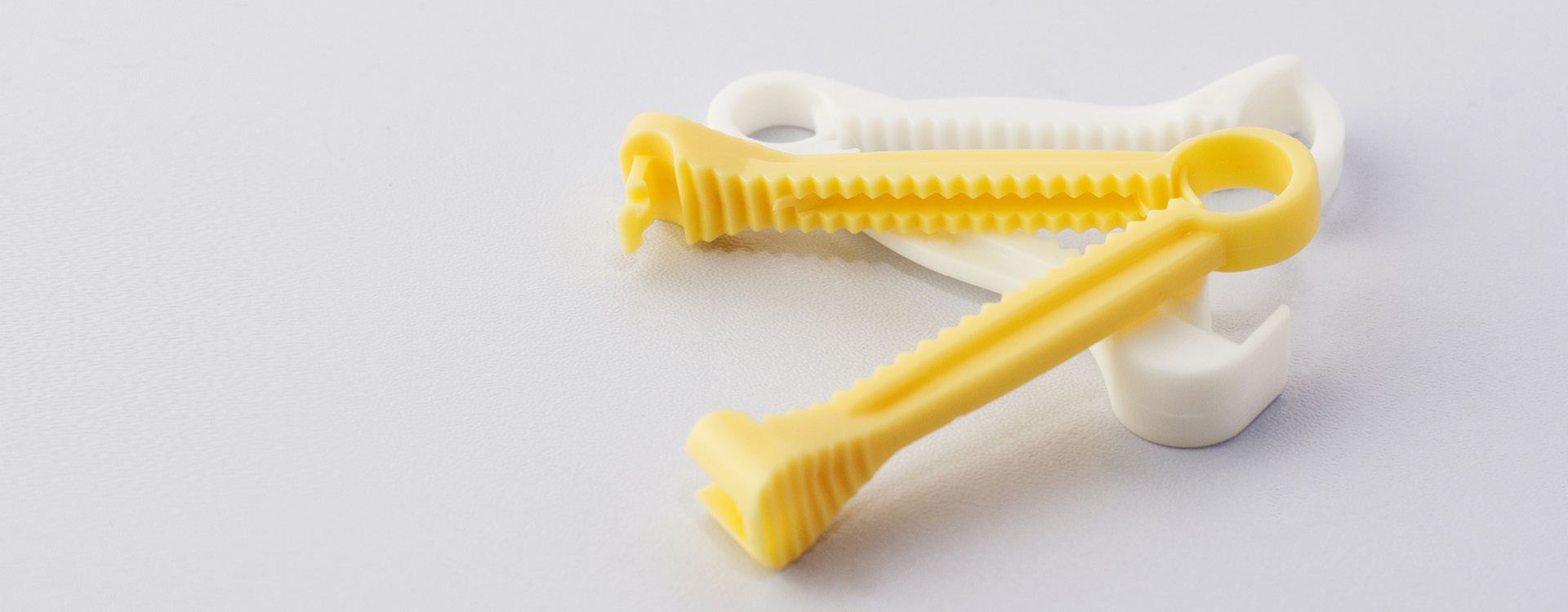No two birth stories are the same. For some parents, labor begins naturally and progresses smoothly. For others, medical support is needed to ensure a safe delivery for both mother and baby. Induction of labor is very common, and there are several approaches providers can use.
One of the most widely used, safest, and least invasive induction methods is Foley balloon induction, also called Foley bulb induction or cervical balloon induction [*].
Hearing the term for the first time can sound intimidating; however, understanding what actually happens during the procedure can take away much of the fear. The truth is that Foley balloon induction has been used safely for decades, and many parents appreciate that it works gently with the body rather than against it [*].
This guide will walk you through what a Foley balloon is, how induction works, what it feels like, how long it usually takes, and what the benefits and risks are. We’ll also look at how effective it is, what alternatives exist, and answer some of the most common questions parents ask.
What Is a Foley Balloon?
A Foley balloon is a thin, flexible medical tube with a small balloon at its tip. It was originally designed for urinary drainage. Over time, doctors realized it could be adapted to help during childbirth [*].
In labor and delivery, the balloon is carefully placed through the cervix and then filled with sterile water or saline. As it inflates, it presses gently but steadily against the cervix. This pressure encourages the cervix to soften, thin out, and begin opening [*].
For a vaginal birth to happen, the cervix usually needs to dilate to around ten centimeters. If the cervix is still firm and closed, contractions alone may not be effective early on [*]. The balloon’s pressure mimics the natural downward push of a baby’s head. At the same time, it stimulates the release of prostaglandins, hormones that soften cervical tissue. Together, these changes help prepare the body for labor in a safe and mechanical way, without starting with medications [*].
This mechanical process is one reason many providers favor it as a first step. By avoiding or delaying medication, the Foley balloon gives the body a chance to “catch up” naturally, which can sometimes mean a smoother start to labor [*].
How Foley Balloon Induction Works
When induction begins, your provider will check your cervix to see how soft or open it is. This cervical exam gives them a sense of whether your body is already showing early signs of readiness or whether more assistance is needed [*].
You’ll then be positioned much like you would for a pelvic exam. A sterile catheter is carefully guided through your cervix so that the balloon sits just past the opening. Depending on your provider’s technique, they may use a speculum to see the cervix clearly or guide it with their hand by feel [*].
Once in place, the balloon is inflated with sterile fluid — usually between 30 and 80 milliliters. As it expands, you may feel pressure or cramping, similar to menstrual discomfort. Some describe it as a deep ache in the pelvis, while others compare it to an intense period cramp [*].
The tubing connected to the balloon is sometimes taped to your thigh. This creates a gentle downward pull, helping the balloon maintain constant pressure against the cervix. This steady pressure is the main driver of progress, slowly but surely helping the cervix change [*].
The balloon then remains in place while you wait. It may stay for as long as twenty-four hours, though many people find it comes out sooner. When it slips out, that’s usually a sign your cervix has opened to about three or four centimeters. At that point, your provider will check again and decide what comes next [*].
Labor may continue naturally from there, or your provider may recommend the next step — often Pitocin (oxytocin) to stimulate contractions, or breaking your water to encourage things to progress [*].
Some hospitals keep patients in the hospital throughout the waiting period, while others allow outpatient Foley inductions. If you go home, you’ll get clear instructions on what to watch for, including bleeding, fluid leakage, or contractions that become strong and regular. Whether you’re at home or admitted, your care team will check in and decide on next steps based on how your body responds [*].
What Does Foley Balloon Induction Feel Like?
Experiences vary widely. During insertion, many people describe it as similar to a Pap smear or an IUD placement. There may be a sense of pressure, pinching, or cramping for a short time, especially while the balloon is inflated [*].
Once it’s in, the sensation usually changes to one of fullness or heaviness in the lower pelvis. Some also notice backache, mild cramps, or light spotting [*]. For some, the balloon fades into the background quickly. For others, it remains uncomfortable, especially when moving around or trying to sleep [*].
As contractions begin and intensify, the balloon itself often becomes less noticeable. Labor pain takes center stage, and the discomfort from the balloon blends into the larger experience [*].
If pain feels overwhelming at any stage, it’s important to speak up. Providers can offer options ranging from repositioning and heat packs to medication or, later, an epidural if stronger interventions are added [*]. The important thing to remember is that there are always ways to make you more comfortable — you don’t have to “tough it out” alone.
How Long Does Foley Balloon Induction Take?
This is one of the most common questions. The balloon typically stays in place for twelve to twenty-four hours [*].
Some people start contracting within just a few hours. Others notice little change until the balloon falls out. When it does, it usually means the cervix has reached three or four centimeters of dilation [*]. From there, active labor may begin naturally, or your provider may suggest starting Pitocin to keep things moving [*].
The total time from insertion to delivery varies. It depends on whether this is your first baby, how soft the cervix was at the start, your baby’s position, and how your body responds. For some, the process is quick, and delivery happens the same day. For others, it unfolds over a longer period and involves multiple induction methods [*].
It’s helpful to think of the Foley balloon not as a clock, but as a starting point. It sets the conditions for your body to continue into labor. Some providers even explain it as “priming the engine” — it doesn’t always start the whole process, but it makes everything that follows more effective [*].
Benefits of Foley Balloon Induction
The Foley balloon is often seen as a gentle starting point for induction. It supports the body’s natural progress while offering clear signs of dilation and the flexibility to pair well with other methods if needed.
- Low-medication option - Because it works mechanically, it avoids some risks of medication-based induction, such as uterine overstimulation [*].
- Provides a clear marker of progress - When the balloon comes out, you know you’ve reached a predictable point in dilation, usually three to four centimeters [*]. This can be encouraging both for parents and providers, offering a tangible sense of progress during a time when waiting can feel long and uncertain.
- May reduce the chance of C-section - Research shows that using the Foley balloon can sometimes lower the likelihood of needing a cesarean birth [*][*]. It is also often preferred for those attempting a vaginal birth after cesearean (VBAC), as it carries less risk of uterine rupture compared to prostaglandins [*].
- Offers flexibility - If the balloon doesn’t trigger labor by itself, it often makes Pitocin or other methods more effective afterward [*]. Because it doesn’t require special drugs or equipment, it’s widely available in hospitals and birth centers, even in smaller facilities.
Risks and Drawbacks
Although considered safe, the Foley balloon is not without potential downsides. These risks are uncommon, but knowing them ahead of time can help you feel prepared rather than surprised.
- Can cause discomfort or cramping - Placement and use of the balloon may cause cramping, pressure, or light bleeding. Light bleeding or spotting is normal, but heavy bleeding should always be reported immediately [*].
- Small risk of infection - Because a device is being placed through the cervix, there is a slight chance of infection [*]. Providers use sterile techniques to minimize this risk, and you’ll be monitored closely for any concerning signs such as fever, foul-smelling discharge, or chills [*].
- Rare chance of premature rupture of membranes - In some cases, the balloon can cause the amniotic sac to rupture earlier than planned.
- Doesn’t always work - While often effective, some cervixes remain firm or closed despite the pressure, meaning other methods are needed [*].
How Effective Is It?
Foley balloon induction is considered highly effective at ripening the cervix [*]. In most cases, it achieves the goal of getting to three or four centimeters. From there, labor either starts on its own or responds more readily to medications like Pitocin [*].
Studies suggest that combining the Foley balloon with Pitocin improves outcomes and increases vaginal delivery rates compared to Pitocin alone [*]. For those planning a VBAC, it is often the safest choice.
Effectiveness is also influenced by something called the Bishop score, which assesses cervical readiness [*]. If the score is low, the Foley balloon can be especially useful because it mechanically prepares the cervix when it otherwise wouldn’t be ready [*].
Alternatives to Foley Balloon Induction
If the Foley balloon is not recommended or doesn’t work, there are several alternatives. Often, a combination of these methods is used for the best results.
- Prostaglandin medications - Placed in the vagina as a gel or insert, these help soften and thin the cervix by mimicking the body’s natural hormones [*].
- Pitocin (IV infusion) - A synthetic form of oxytocin given through an IV that stimulates contractions; dosage is adjusted to encourage a steady labor pattern [*].
- Membrane sweep - During an exam, the provider uses a finger to gently separate the membranes from the cervix, which can release natural prostaglandins and sometimes star labor within a day [*].
- Artificial rupture of membranes - Often called “breaking the water”, this involves creating a small opening in the amniotic sac to release fluid and encourage stronger contractions [*].
- Natural approaches - Some of the common ways women try to induce labor include walking, nipple stimulation, and sex. Evidence is mixed for these, but they are generally safe to try.
Foley Balloon Induction FAQ
What is Foley balloon induction?
A Foley balloon (or Foley bulb) is a small catheter with a balloon at the tip. It’s inserted into the cervix and inflated to help gently open and ripen the cervix for labor induction [*].
How long after a Foley balloon does labor start?
It varies. Some people begin contracting within a few hours, while others need Pitocin or another step before active labor begins [*].
How fast do you dilate with the balloon?
The balloon usually helps the cervix open to around 3–4 cm within 12–24 hours, though it can be more or less depending on the person [*].
How dilated are you when a Foley balloon falls out?
Typically around 3 to 4 centimeters, though some may be slightly further along [*].
How long after a Foley balloon do you give birth?
It’s different for everyone. Some deliver within hours of the balloon coming out, while others may take a full day or more [*].
Is Foley balloon induction better than Pitocin?
They work differently. The balloon softens and opens the cervix, while Pitocin stimulates stronger contractions. Many providers use them together for the best results [*].
Does the Foley balloon speed up labor?
It usually shortens the early phase by preparing the cervix, but active labor still progresses at its own pace [*].
What is the success rate of Foley balloon induction?
Very high for cervical ripening. When combined with Pitocin or other methods, most people go on to have a successful vaginal delivery [*].
What are the disadvantages of balloon induction?
It can cause cramping, pressure, or spotting. Rarely, infection may occur or the balloon may not ripen the cervix enough, requiring other induction methods [*].
What happens if a Foley balloon pops or doesn’t work?
It’s uncommon, but if it deflates or fails to make progress, your provider may replace it or move to another induction method like Pitocin or breaking your water [*].
How big does the Foley balloon get?
It’s inflated with about 30–80 milliliters of sterile fluid, roughly the size of a small plum to a golf ball [*].
Can I pee with a Foley balloon in?
Yes. The catheter doesn’t block the urethra, so urination is still possible [*].
Can you have a bowel movement with a Foley balloon?
Yes, though it may feel a little awkward due to the pressure [*].
Can you go home with a Foley balloon in place?
Some hospitals allow outpatient Foley inductions if both you and baby are stable, while others keep you in for monitoring [*].
The Bottom Line
Foley balloon induction is one of the most trusted methods to prepare the cervix for labor. It has been used safely for decades, with a strong track record of success. Although it can sound intimidating, the procedure is straightforward and generally well tolerated.
For many families, it provides a gentle, reliable start to labor without relying heavily on medications. For others, it’s an important first step that makes additional interventions more effective. No two experiences are the same, but in almost every case, the Foley balloon helps move the body closer to delivery.
Every pregnancy is unique. Sometimes the balloon is enough to trigger labor on its own, and sometimes it is just the beginning of a longer induction process. Either way, it plays a valuable role in preparing the cervix and helping the body get ready.
By learning what to expect — how it’s placed, what it feels like, how long it usually takes, and what the benefits and risks are — you give yourself the power to approach induction with confidence. Knowledge and realistic expectations are some of the best tools you can bring with you into birth.
Remember, too, that induction is just one part of a much bigger journey. Even if the Foley balloon doesn’t work exactly as planned, it sets the stage for other interventions and can still bring you closer to the safe delivery of your baby. What matters most is that you feel informed, supported, and respected in your choices.
It’s Not Too Late to Bank Cord Blood
Even while preparing for labor, many parents take a moment to think about their family’s long-term health. Cord blood banking allows you to save your baby’s stem cells, which can be used in treatments for certain cancers, blood disorders, and immune diseases. They may also be a match for siblings or parents.
The process is simple, safe, and does not interfere with delivery. Even if you are close to your due date, it’s not too late to enroll and receive a collection kit in time. MiracleCord, recognized as the Best U.S. Cord Blood Bank by Global Health & Pharma, offers fast shipping and high-quality services.
Call 888.743.2673 today or request your free information kit today and give your family the option of future protection.
DISCLAIMER: THE INFORMATION ON THIS WEBSITE IS NOT INTENDED TO BE USED AS MEDICAL ADVICE.The materials and information contained on the MiracleCord website is provided for educational and informational purposes only, and is not intended to, and does not constitute, medical or other health advice or diagnosis, and should not be used as such. You should not use this information to diagnose or treat a health problem or disease. If you are seeking personal medical advice, you should consult with a licensed physician. Always consult with a qualified health care provider regarding a medical condition.




